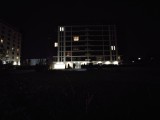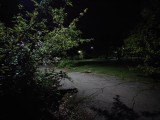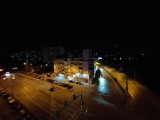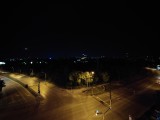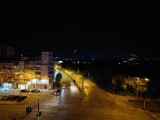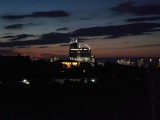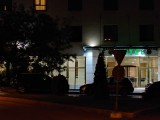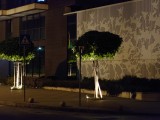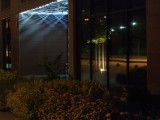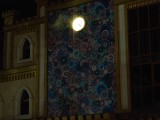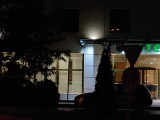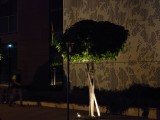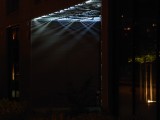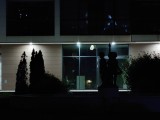Sony Xperia 1 IV review

Photo quality
The main camera of the Xperia 1 IV takes outstanding daylight photos, just like the previous high-end Xperia phones. The 12MP samples are incredibly detailed and noise free. The sharpness is just right, too, sharp but not over-sharpened. The best part is the natural rendition, especially evident across foliage and random detail. Apple should take notes on how it's done.
The white balance across all photos is spot-on, as promised by Sony, and the colors are always true to life.
The dynamic range also deserves a good word, it is great most of the time, boosted by the Auto HDR, but it never goes over the top. All photos exhibit high contrast, and there are some shadows a bit darker than we would have liked them, but this is nitpicking.
Overall, the Xperia 1 IV primary camera shoots some of the best daylight photos a smartphone can offer these days.
The 12MP photos we took with the ultrawide-angle camera turned out impressive as well. All photos show an abundance of detail and have commendably sharp centers. The sharpness drops slightly outside the center, and the extreme corners are even softer because of the ultrawide-angle lens properties.
And even with all these small imperfections, the 12MP ultrawide photos are among the best within the UW flagship class for their resolved detail and the incredibly natural rendition. The foliage is just commendable, and the only other UW cameras this good outside Sony's are probably Huawei's 40MP units, which are not as wide, though.
The rest of the ultrawide photo qualities are equally impressive. The noise is nicely low, the white balance is accurate, and the colors are realistic and truthful to what we saw this day.
The dynamic range is excellent for such a camera, and we can say the processing has been improved since the Xperia 1 III, and we got fewer blown highlights in the demanding scenes.




























Daylight photos, ultrawide camera
Even though the ultrawide camera supports autofocus, it cannot do macro as its minimal focus distance is about 10cm or so.
Update, June 8: The Xperia 1 IV received a new firmware update that improved on the telephoto camera quality. We've updated our photo and video quality findings and samples.
The telephoto camera has two fixed positions on the viewfinder - 3.5x and 5.2x - you can use any zoom level in-between thanks to the continuous optical zoom available via the new lens. There is a minor difference in the quality by increasing the magnification - each step you go upwards from 3.5x, you will get a minor drop in the absolute sharpness and increased optical aberrations like purple fringing.
Let's start with the default 3.5x 12MP photos. These have enough resolved detail for a zoom camera, and the sharpness and contrast were improved via the latest software update. The rendition is kept equally natural, making these images so pleasant and good.
The colors are matching to reality and what the other cameras offered us in the same scene. The dynamic range is praiseworthy as usual, and the noise levels are kept low enough.
Overall, we are happy with the 3.5x zoomed photos, and the camera is reliable and will do a very good job when necessary.












Daylight photos, tele camera 3.5x
The latest firmware update improved the sharpness and the contrast of the 5.2x zoomed photos. They are still slightly softer than the 3.5x ones and slightly noisier (f/2.8 vs. f/2.3 aperture). But now we didn't experience any focus issues and all samples we took were sharp enough.
So, the maximum optical zoom offers great photos with enough detail, just the right sharpness and incredibly natural processing. The colors, dynamic range and contrast are all great, just like in the other photos we saw so far.
So, given the type of lens and the innovative (for a smartphone) zoom, we'd say Sony did a superb job with the technology at hand, and we got plenty of nice photos.












Daylight photos, tele camera 5.2x
And here are some photos taken at 4.4x zoom. They are as sharp as the 5.2x samples and excel in everything - natural look, colors, dynamic, contrast, noise handling.




Daylight photos, tele camera 4.4x
Here is the deal. It's great that Sony has developed the continuous zoom-capable lens, and we have our fingers crossed for those making an impact and being upgraded in the future. Stepless zoom is the way for sure. But the difference in the FoV between the 3.5x and the 5.2x zoom is small, and, in our opinion, it is not worth it shooting at 5.2x because of the worsened quality. You can do just fine with the default 3.5x 12MP photo and crop if needed. We don't want to diminish Sony's work here, it is commendable; it's just a bit pointless at these zoom levels for now. But we hope they make it better and offer us continuous zoom between 3x and 10x, for example.
We shot some Bokeh photos as there is no dedicated portrait mode on the Xperia 1 IV for the rear camera. Though the subject separation is far from ideal, these are good despite having a ToF camera to help. It looks like the depth map has been made by software tricks only and without using the actual depth sensor, which may explain the many obvious defects.
The subjects are well exposed, very natural-looking, and the white balance is perfect, as usual. The blur is nice, too.
We hope Sony fixes the Bokeh's depth map with a firmware update and improve on the separation.
The Xperia 1 IV doesn't do Night Mode. The main camera doesn't need Night Mode anyway. The 12MP photos we took at night are incredibly realistic, sharp, and colorful. There is a ton of resolved detail, and once again, the natural rendition is unmatched. The color saturation is kept really good, a bit punchier at times even.
The dynamic range deserves praise most of the time, though some demanding scenes do exhibit a few blown highlights.
All of the samples here were shot at a low shutter speed of 1/4s, and some multi-frame stacking seems to be happening even if it's not what we're used to calling Night Mode. But what really matters is that the Xperia 1 IV low-light photos are great and among the most natural-looking and realistic across the entire current smartphone range.
The 12MP photos with took with the ultrawide camera at night are solid, not two words about that. They are detailed and sharp, with incredibly proficient noise reduction, realistic color saturation, high contrast and acceptable dynamic range.
They are a bit dark for our taste and look somewhat underexposed - not that they are. This camera uses a smaller sensor with a darker aperture, so this darker look is what should be natural for it.
These ultrawide images are good and are showable, of course. But this camera would have greatly benefitted with a Night Mode boost.
Update, June 8: The Xperia 1 IV received a new firmware update that improved on the telephoto camera quality. We've updated our photo and video quality findings and samples.
Sony has improved on the telephoto camera performance in low-light conditions via its latest firmware update. Most of the photos we took are less blurry and slightly sharper than what we got with the first (supposedly retail) firmware.
The well-lit scenes are lovely - they are sharp and detailed, with excellent color saturation, good exposure, low noise and even the dynamic is better than expected.
The zoomed photos that are not as well-lit still show off excellent rendition, but they may have blown highlights and combined with the overall dark look they could seem underwhelming to some.
The slowest shutter speed the zoom camera uses is 1/8s.
We consider all of these zoomed photos as outstanding - they are not only usable, but in fact, really good if you are not shooting in pitch darkness, obviously. Also, we got few, if any, blurred ones.
The 5.2x zoomed samples are a bit darker (f/2.8, don't forget) and a bit softer and noisier. But they are just as usable as the 3.5x ones, and we'd give it so Sony - they did do a solid job with the low-light processing.
And here are photos of our usual posters taken with the Sony Xperia 1 IV. You can see how it stacks up against the competition. Feel free to browse around and pit it against other phones from our extensive database.



Sony Xperia 1 IV against Galaxy S22 Ultra 5G and the iPhone 13 Pro Max in our Photo compare tool
Selfies
The Sony Xperia 1 IV brings a welcome upgrade to the selfie kit - the phone now uses a 12MP Sony 1/2.9" sensor. And the 12MP selfies we took with that camera are stellar!
Indeed, the subject is always well-exposed in these selfies, with incredible detail and sharpness, low noise and spot-on colors. The dynamic range is good, too.
The Sony Xperia 1 IV camera is a breath of fresh air among a sea of Quad-Bayer front shooters that save upscaled soft photos. And we simply love it.
Portrait Selfie is a dedicated shooting mode on the Xperia 1 IV, and it saves likable portraits. The subject separation looks good, better than on the rear camera, and the blur is quite convincing. The subject's detail and look is on par with the default selfies - meaning an excellent sharpness and overall rendition.
Video recording
The Xperia 1 IV records video up to 4K30 with all four cameras. If you want a higher frame rate, there's the 1080p/60fps option, too.
Using the Cinema Pro app, you can unlock a host of other frame rates on all rear cameras - you get 4K at 24, 25, 30, 60, and 120fps, though that's not the full 16:9 UHD type of 4K, but 21:9 3840x1644px instead. The Pro in the name implies a better understanding of video capture parameters and workflow from the user. It requires a certain level of ability (and willingness) to post-process the footage - you likely won't be shooting casual 4K60 clips using the Camera Pro app.
Using the Video Pro app also unlocks 4K mode up to 120fps on all rear cameras, too, and it's easy shooting with this app if you want a point and shoot 4K at 60fps or 120fps clip that doesn't necessarily need to be processed later.
One major improvement over the previous Xperia flagship cameraphones is the addition of the option to shoot in Wide Dynamic Range. This is done by combining multiple frames, but it's not your default setting for a reason - when shooting in WDR, stabilization and 60fps capturing are not supported.
And now, let's talk quality.
The 4K footage has a video bit rate of about 55Mbps, while audio is captured stereo with 156 kbps bit rate. You can enable Intelligent Wind Reduction, a real-time filter that eliminates wind noise if present.
All videos we shot have outstanding audio quality with rich and deep sound.
We shot WDR videos with all cameras, and they all have one thing in common - the WDR, as promised, widens the dynamic range by keeping the highlights from clipping. It also deepens the shadows and increases the contrast. We found the WDR videos a bit more pleasant than the Standard ones, though SteadyShot EIS is not available, and we consider it essential.


Standard dynamic range • Wide dynamic range


Standard dynamic range • Wide dynamic range
We will be providing two WDR samples - for the main and ultrawide camera, but you can imagine - this mode behaves consistently across all cameras, selfie included.
So, the 4K standard footage from the main camera is impressive as it offers the same natural-looking rendition of, well, everything, especially the foliage. There is enough detail, too, and the noise is quite low.
The videos have good contrast and dynamic range, though some highlights (cars, clouds) are often burnt out.
Overall, the videos are really good, though we've seen competitors offering a bit more detailed, cripser footage. Then again, few, if any, can match Sony's natural and balanced look. Just look at that foliage rendition.
The 4K Wide Dynamic Range videos offer a welcome boost in contrast, and the shadows look more natural, while the clouds and other white objects are not clipped.
The primary and telephoto cameras rely solely on optical stabilization when shooting WRD videos, while the ultrawide and selfie have nothing, and the videos are shaky if not using a tripod. But with or without OIS, neither of the cameras will provide satisfying WDR if not mounted on a tripod.
Apple offers Wide Dynamic Range as a default option, with stabilization and high frame rates, but we guess that's because it has complete control over its chips and can do better with real-time image processing.
The low-light footage from the main camera is usable and looks okay. It offers enough detail, the exposure is okay, and the colors are true to life. The dark sky is a bit blueish, and there is a lot of noise across the picture, but it's tolerable. This is not among the best 4K night videos we've seen, but far from the worst either.
The 4K videos shot on the ultrawide camera are excellent considering the wide-angle lens. They offer a lot of resolved detail, better than most ultrawide cameras we've met to this date, and, sorry if it's getting annoying, outstanding processing and natural sharpness. Everything looks good on the ultrawide clips.
The ultrawide videos have the same good qualities as the one from the primary camera - good dynamic range and adequate contrast, accurate colors, and low noise levels.
Being an ultrawide camera, you can expect slightly softer corners than the center, but the difference is barely visible. Other cameras of this type often have it much worse around the edges.
The WDR 4K clip from the ultrawide camera has no blown highlights and offers higher contrast with deeper shadows. But, if you won't be mounting it on a tripod, the WDR option is not recommended as there is no EIS available for it.
The low-light 4K videos from the ultrawide camera are usable as there is okay-ish detail and good colors, but they are quite noisy and will look bad in full res on a 4K TV.
Update, June 8: The Xperia 1 IV received a new firmware update that improved on the telephoto camera quality. We've updated our photo and video quality findings and samples.
We liked the 4K videos shot with the telephoto camera at 3.5x zoom. They are detailed, with balanced sharpness and a natural look. The noise is incredibly low, the dynamic is great, and the colors are spot-on.
The 5.2x zoomed video is softer than the 3.5x footage and less detailed. It is more than usable, colorful, and with high dynamic, but when it comes to resolved detail and sharpness, those are lackluster.
And here are screen grabs from each zoomed video - you can use our tool to compare both and see the difference in the quality for yourself.


Snap from 3.5x zoom video • Snap from 5.2x zoom video
Finally, the low-light videos from the zoom camera are obviously overrun by noise, and yet, if you need to use this camera - it will yield rather usable videos. The processing doesn't try to get rid of the noise, and that's the reason there is a lot of visible detail under it.
Finally, here is the Sony Xperia 1 IV in our video tool so you can make your own comparisons.



Sony Xperia 1 IV against Galaxy S22 Ultra 5G and the iPhone 13 Pro Max in our Video compare tool
Reader comments
- Anonymous
- 06 Nov 2024
- IVM
Any user know how to use 2 WhatsApp in this Xperia 1 iv, since it is dual sims
- Anonymous
- 18 Jun 2024
- 0uJ
The worst phone, I've ever had. It overheats while I was watching a YouTube video. It can't handle Bluetooth
- Kriegsherr
- 08 Nov 2023
- 6tD
The tall aspect ratio won't bother you longer. You would eventually find it cool. Specially for app usage it's very good. Only slight issue is typing which might take some time to be adjusted. Overall top phone. The best display in the bu...



















































